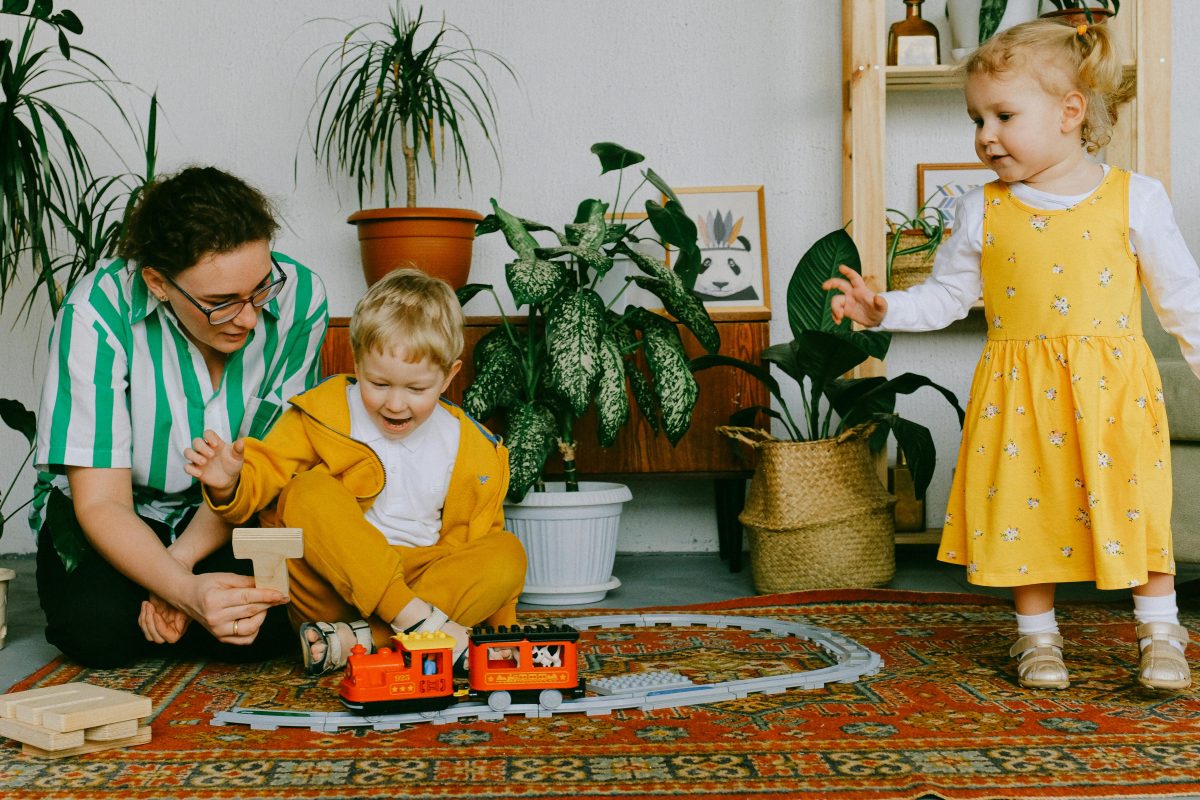Understanding the Importance of Positive Sibling Relationships

Sibling relationships have a profound, long-lasting effect that shapes people’s personalities, behaviors, and futures. These relationships, which are frequently the longest ones we will ever have, are essential to our mental health. Profound sibling relationships provide incomparable psychological advantages, such as:
- Self-esteem that has grown
- Empathy
- Resilience
Siblings serve as peers, confidantes, and role models, all of which are vital for social and emotional development. They prepare us for the intricate dynamics of external relationships by teaching us about collaboration, compromise, and handling conflict. The depth of these relationships promotes a feeling of security and belonging, which helps to create a well-rounded, emotionally stable person. The first step in creating a loving, supportive family where each member flourishes is realizing the importance of preserving these ties.
Establishing the Basis in Early Life

Positive sibling relationships are facilitated by fostering empathy and understanding in children from an early age. It’s important to foster an innate sense of compassion and connection in them rather than merely teaching them how to share. Children who develop empathy see the world from their sibling’s point of view, which strengthens their relationship beyond simple cohabitation.
Sibling bonds are formed by shared memories and experiences. Whether they are minor events or significant turning points in life, these moments become the tales that families tell one another for years. They strengthen the bond between siblings by serving as a reminder of their special connection and shared history.
Parents are essential role models for healthy relationships. Through their interactions, kids get knowledge about:
- Talk to each other
- Deal with disagreements
- Express your love
When parents act with kindness, love, and respect toward their siblings, it sets a powerful example for their children and influences how they should interact with their siblings. Effective ways for parents to lead by example include collaborative problem-solving, where siblings work together to overcome obstacles, and family meetings, where everyone’s voice is heard.
Parental guidance in early childhood development can foster an atmosphere that supports the development of healthy sibling relationships. Early understanding-building, memory-sharing, and positive interaction modeling pave the way for a lifetime of friendship and support between siblings.
Managing the Difficulties of Sibling Enmity

Sibling rivalry is a complex phenomenon that lies at the core of many family dynamics. It is essential to comprehend the underlying causes of these conflicts. They typically result from:
- The pursuit of parental focus
- Resources are competitive
- Disparities in interests and personalities
Understanding these triggers enables the development of focused strategies that deal with the underlying problems.
Children need to learn effective communication and conflict resolution techniques. Conflicts can become opportunities for learning if they are taught how to listen to one another, communicate their needs and feelings clearly, and find common ground. Siblings can work together to find creative solutions to problems and build stronger bonds by using strategies like “I” statements, active listening, and brainstorming solutions.
It is impossible to overestimate the importance of equality and fairness in parental treatment. Youngsters are acute observers of their surroundings, and rivalry between siblings can be intensified by perceived favoritism. A sense of security and belonging is fostered by recognizing each child’s unique needs and contributions and working toward equitable treatment. It’s about building healthy sibling relationships by making sure every child feels understood and appreciated.
Families can effectively navigate these challenges by addressing the underlying causes of sibling rivalry, providing children with effective communication and conflict resolution skills, and emphasizing equity and fairness in parental treatment. These techniques not only lessen conflict but also improve the bond between siblings, fostering a peaceful and encouraging family environment.
For additional perspectives on cultivating healthy sibling bonds, visit the For Australian families, Raising Children Network provides a plethora of resources and professional guidance.
Encouraging Self-reliance While Preserving Relationships

It’s a fine line to encourage independence in siblings while still keeping them close. It entails preserving their uniqueness while promoting a sense of community. Both their growth and the wellbeing of family ties depend on this balance.
- It is crucial to promote appropriate boundaries and personal space. It gives siblings the freedom to pursue their passions and grow as individuals apart from their family. For them to feel confident and worthy of themselves, they must be independent.
- However, it’s just as crucial to create times of intimacy and shared activities. These times deepen the bond between siblings and foster a special fusion of independence and interdependence.
An important part of this dynamic is the parents. They create the foundation for a nurturing family atmosphere by encouraging separate but connected relationships. This entails recognizing the distinct needs and contributions of every child while simultaneously promoting a feeling of unanimity and belonging. Techniques like family gatherings and group problem-solving sessions can be very helpful. They promote candid communication, respect for one another, and working together to overcome obstacles in the family.
Positive relationships between siblings can be fostered by parents who strike a balance between encouraging independence and preserving connection. These connections, which are based on mutual respect, comprehension, and life experiences, are priceless. They help create a peaceful home environment and encourage every child’s development into a fully formed adult.
Treating Particular Situations

- A nuanced approach is necessary to navigate age gaps and the particular challenges they present. Age differences can result in different developmental stages and interests, which can make it harder for people to engage in shared activities and understand one another. However, these spaces also provide older siblings with the chance to guide younger siblings, creating a caring environment that is advantageous to all.
- Patience and empathy are necessary for blending families and creating healthy step-sibling relationships. Step-siblings can get along better if they use techniques like starting new family customs, making sure each child spends time with each parent alone, and encouraging honest communication. Encouraging them to collaborate on tasks or endeavors lays the groundwork for mutual respect and teamwork.
- It’s critical to support siblings during difficult times and family transitions. It’s important to communicate about changes with children in an open and honest manner, to acknowledge their feelings, and to reassure them. Sibling bonds are strengthened during uncertain times when they are encouraged to share their worries and fears and to stand by one another. It’s about building a strong sibling bond that can endure life’s ups and downs by providing a safe environment where feelings can be expressed without fear of rejection.
Parents can help their kids form loving, supportive sibling relationships by sensitively and understandingly handling these unique situations. These initiatives create the foundation for a family atmosphere in which each member, despite any difficulties they may encounter together, feels appreciated, understood, and connected.
Supporting Optimal Sibling Bonds Throughout Adulthood

Sibling relationships are a dynamic journey that change dramatically over time. These ties change as life undergoes a multitude of changes, from the shared playtimes of childhood to the intricate, multi-layered relationships of adulthood. Maintaining a solid, harmonious relationship between siblings as they get older requires an understanding of this evolution.
- Despite the unexpected turns life takes, such as changes in life stages or distances, there are ways to maintain the sibling bond. Frequent communication maintains the connection strong, whether it be traditional or digital.
- Making new memories and prioritizing family get-togethers as adults strengthens the ties forged during childhood.
Shared memories and history form the foundation of enduring sibling relationships. These tales, replete with tears, laughter, and adventures, serve as the foundation for the sibling bond. They add depth and warmth to the relationship by acting as a foundation for future exchanges and a reminder of a shared past.
Siblings can have a bond that not only survives but also thrives over time by accepting the fact that their relationships change over time, using techniques to stay in touch, and cherishing moments that are shared. This enduring bond provides a special reservoir of love, compassion, and support that is priceless for enduring life’s journey.
In Conclusion
Healthy sibling relationships are the cornerstone of harmony within the family. They provide a special fusion of empathy, consolation, and joy. From infancy to maturity, maintaining these relationships calls for empathy, open communication, and a shared resolve to overcome obstacles. Siblings can create enduring bonds by adopting techniques that encourage empathy, settle disputes, and celebrate individuality within a cohesive family structure. Let’s make a commitment to maintaining these priceless connections and making sure they get stronger and more encouraging over time.
How to Encourage Positive Sibling Relationships FAQs
Encouraging your children to attend each other’s events and celebrate their achievements fosters mutual respect and pride. Discussing the importance of family support and setting an expectation for positive encouragement can strengthen their bond. This not only shows support but also teaches them the value of being each other’s cheerleader in life.
Make an effort to spend individual quality time with each child, tailored to their interests and needs. This shows them they are valued as individuals, which can reduce feelings of competition and jealousy. Acknowledging each child’s achievements and strengths publicly and privately reinforces your equal love and pride in them.
Encouraging your children to engage in cooperative activities that require teamwork can significantly improve their relationship. These activities help them see the value in working together and teach them how to communicate effectively. It also allows them to share common goals and joys, strengthening their bond.
Preparing your older child for the arrival of a new sibling by involving them in the preparation process can help ease the transition. Discussing the changes and new responsibilities they will have, and the importance of being a big brother or sister, can make them feel important and included. Providing extra attention and reassurance during this time helps mitigate feelings of jealousy or neglect.
Teaching sharing through modeling and positive reinforcement can be very effective. By sharing with your children and praising them when they share with each other, you instill the value of generosity. Setting up shared activities where cooperation is necessary can also encourage a sharing spirit.
Not every argument requires parental intervention; allowing children to resolve their disputes teaches them important conflict resolution skills. Stepping in when conflicts escalate to disrespect or physical altercations is crucial to ensure safety and teach appropriate boundaries. Guiding them towards resolution post-conflict can help reinforce these skills.
Addressing this feeling directly by asking the child to express why they feel neglected and actively listening to their concerns is crucial. Ensuring that you allocate one-on-one time with each child can help them feel valued and loved. It’s also beneficial to involve them in activities where they can shine individually, reinforcing their sense of self-worth.
Parents who demonstrate respectful and loving relationships set a powerful example for their children. Seeing positive interactions teaches children how to treat others and what to expect in their relationships. This modeling extends to communication, conflict resolution, and showing affection.
Setting clear rules about acceptable behavior and consistent consequences for fighting can help manage sibling conflicts. It’s important to address the root cause of the fights and teach them healthy ways to express their feelings and resolve disputes. Encouraging empathy by helping them understand each other’s perspectives can also reduce conflicts.
Promoting cooperative games and activities that focus on team effort rather than individual winners can help lessen competition. Highlighting each child’s unique talents and contributions to the family emphasizes that everyone has their strengths, reducing the need for comparison. Encouraging them to support each other’s goals and achievements can also shift the focus from competition to mutual success.

